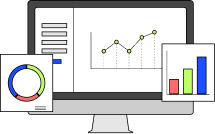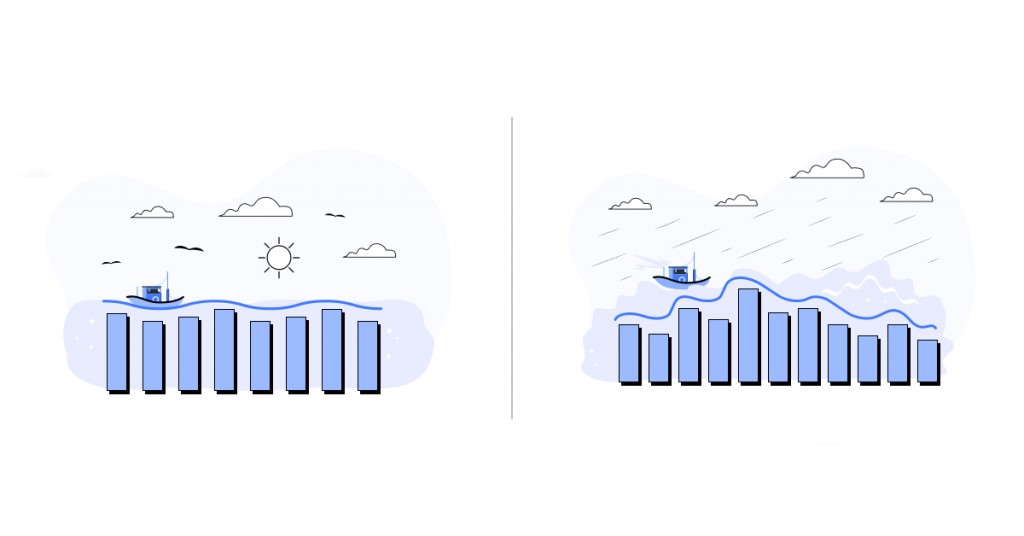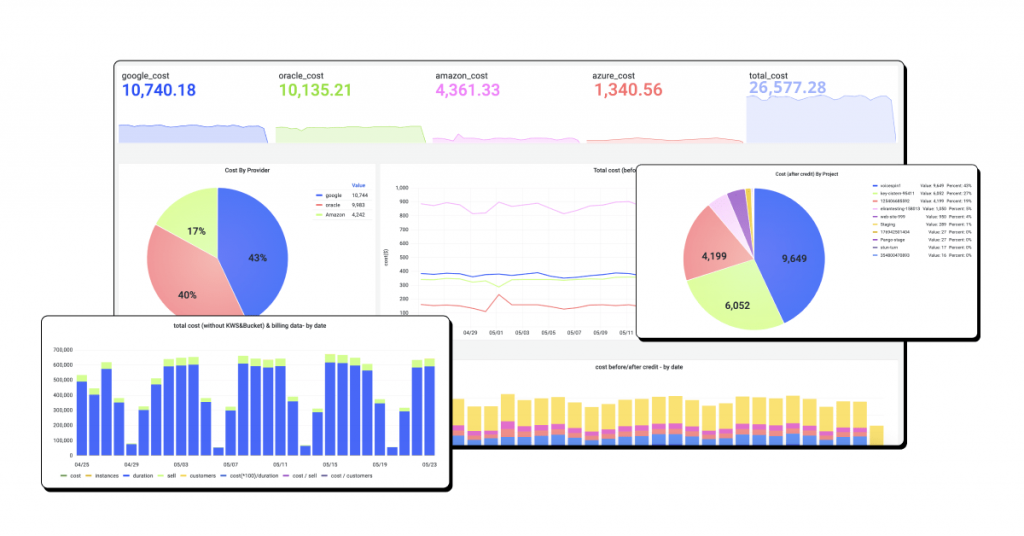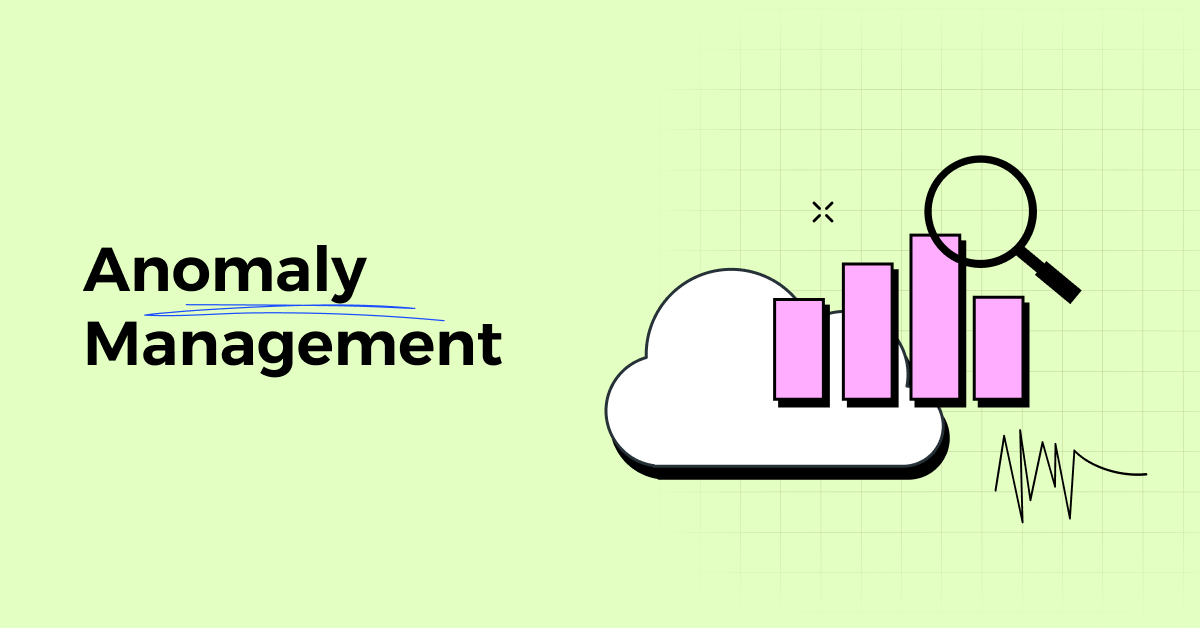Detecting and efficiently managing anomalies in an organization’s cloud spend is critical to optimizing resource utilization, avoiding unforecasted cloud billing charges, and ensuring cloud costs are managed effectively and kept under control. Without an efficient cost anomaly management strategy in place, FinOps teams might be challenged with unexpected cloud expenses, putting a strain on an organization’s budget.
What is Anomaly Management?
In the context of FinOps, anomaly management can be defined as the ability to timely detect, identify, and manage unanticipated cloud cost events in order to minimize their negative impact on the business and its finances. Managing anomalies typically involves using native and third-party cloud cost management tools for detecting, identifying, alerting, and correcting cost anomalies that occur in cloud consumption.
Uncover opportunities to optimize your cloud, simplify cloud management, and reduce costs.
Manage your single or multi-cloud infrastructure and cut down on your cloud bill.

Cloud Cost Anomaly Definition
Cloud cost anomalies are essentially unexpected fluctuations in the costs associated with cloud computing services, resources, and cloud infrastructure usage. Cloud cost anomalies usually occur as deviations in cloud spending that are larger than expected given the historical spending patterns, leading to increased overall cloud expenses. The threshold for deviation to be considered an anomaly may significantly differ depending on the size and type of an organization, the amount of cloud consumption, and other variables.
A cost anomaly detection system monitors cloud costs and triggers cost alerts whenever there is a significant deviation from an expected rate of cloud spend. These could be spikes in total costs of a service or spikes in cost per usage (e.g., a spike in the cost per hour of compute).
Most anomaly detection systems rely on historical data analysis for detecting anomalies. Though based on machine learning models, these systems may lack future awareness, which may result in an increased number of false positives. More advanced, sophisticated systems utilize historical data in combination with forecast data, allowing them to detect anomalies with greater accuracy.
Mitigating Cloud Cost Anomaly: How it Works
A certain company has a consistent pattern of cloud spending, with occasional spikes during peak business hours or when running special promotions. Suddenly, there is a significant increase in costs related to a specific virtual machine instance that doesn’t align with any known business activities and historical patterns. Here’s how anomaly detection would work:
- Detection: The cloud cost optimization platform identifies the unusual spike in VM costs as an anomaly, as it deviates from the historical pattern.
- Investigation: When an alert is received, the IT team investigates the issue and finds that a developer accidentally left a large and expensive VM instance running after testing, instead of shutting it down or resizing it.
- Resolution: The IT team shuts down or resizes the VM, resolving the anomaly and preventing further unnecessary expenses associated with VM usage.
- Learning and Improvement: The incident is documented, and the system’s models may be updated to better detect similar anomalies in the future.
The Importance of Anomaly Management

Identifying and timely addressing anomalies leading to cloud cost spikes through continuous and consistent anomaly management is critical to avoiding unwanted cost surprises in an organization’s monthly cloud bill. These unexpected expenses can be detrimental to an organization’s budget, if not properly mitigated. Cost anomaly detection and management ensures that cloud spending remains within the budget.
While early detection of anomalies is the first critical step in solving unexpected cloud spend, anomaly management also helps prevent anomalies from occurring by tracking down their root cause and enabling FinOps teams to take the appropriate action to mitigate them.
Root Causes of Cloud Cost Anomalies
Cost anomalies and the resulting cost spikes may occur for a number of different reasons. One of the most common ones is misconfiguration. For example, a misconfigured autoscaling system may cause a rapid increase in resource allocation during periods of high demand, resulting in an unexpected cost increase. Misconfigurations, even simple ones, can spin up the wrong number of instances and services, leading to cost anomalies in the total bill.
Anomalies can also be caused by such factors as unauthorized access, a possible cyber attack, security breaches, or other malicious activity, resulting in increased resource consumption and the need to take mitigation measures. Timely detecting and addressing anomalies not only means eliminating unwanted cloud expenses, but also maintaining data security.
Challenges in Anomaly Management
Distinguishing between false and true anomalies
Since anomalies often share patterns similar to normal events, anomaly detection systems may flag normal events as anomalies, producing false positive alerts and making it challenging for FinOps teams to distinguish between false and true anomalies. For example, anomalies may occur due to seasonal patterns that are part of regular business operations. Therefore, it’s essential to carefully adjust anomaly detection algorithms to correctly identify anomalous events that are likely to be true anomalies.
Dealing with latency
When using native anomaly detection tools, anomaly identification based on cloud billing data can be delayed 36 hours from the start of the anomalous event and over 24 hours before it’s processed and made ready to be analyzed. By the time the alert is triggered, long-duration anomalies may cause considerable growth in costs during this timeframe.
Best Practices in Cloud Cost Anomaly Management
Most of the time, cost anomalies can be tracked, tackled, and prevented by consistently following best practices in cost anomaly detection and management and having a properly configured anomaly detection system in place. Taking advantage of the following strategies can help organizations prevent unexpected budget overruns caused by anomalies.
Establishing a baseline
Establishing a baseline for your expected cloud spend is one of the ways to mitigate cloud cost anomalies. That involves identifying your average cloud spend based on historical cost data and creating a reference point for what would be considered a normal or expected representation of your typical usage and cost patterns. This baseline would serve as a benchmark for anomaly detection. With an established baseline, you can easier detect anomalies that deviate significantly from the expected cost patterns.
For example, a 10% deviation might be considered normal as it may stem from expected fluctuations (such as seasonal cost spikes or significant changes in an organization’s operations), while anything that goes beyond the tolerance level could be alerted as a potential anomaly that needs further investigation into the root cause.
Continuous real-time monitoring
Organizations can protect themselves from unexpected cloud spikes by continuously monitoring and optimizing their resources and cloud costs in real time. According to the State of FinOps 2022 report, 53% of respondents indicated that it takes days for their FinOps teams to respond to anomalous cost increases.
With a proper real-time monitoring system, FinOps can get rapid insights into what particular resources might be causing the deviation and make adjustments quickly before cloud costs get out of control and have a significant negative impact on an organization’s budget. For example, they may shut down the resources that are no longer used or optimize resources that are costing too much by switching to more cost-efficient alternatives.
Therefore, when choosing cloud cost optimization tools, it’s essential to select those that provide real-time monitoring capabilities, enabling FinOps to spot and address anomalies right as they are happening.
Check our article to learn the best practices for cloud cost optimization.
Using native cloud cost management tools
Major cloud providers, including Amazon Web Services (AWS), Microsoft Azure, and Google Cloud offer their own cost anomaly detection tools that leverage machine learning to identify abnormal spending, helping FinOps better manage their cloud costs and resource utilization.
AWS Cost Anomaly Detection
AWS Cost Anomaly Detection, which is a feature of the AWS Cost Management suite, enables continuous monitoring of your AWS costs and usage and allows you to define custom anomaly thresholds and receive alerts when any anomalous spend is detected, either individually or on a daily or weekly cadence. Additionally, the tool enables you to determine the root causes of anomalies, including the specific usage causing abnormal cost spikes.
Microsoft Cost Management
Microsoft Cost Management (formerly Azure Cost Management and Billing) allows you to subscribe to anomaly alerts for each subscription in your environment and get notified when an unusual spike has been detected in your normalized usage based on historical usage. You can also review costs manually through detailed cost breakdowns and usage analytics to identify potential anomalies that may have been missed.
Google Cloud Cost Management tools
Google Cloud customers can leverage artificial intelligence and machine learning capabilities in conjunction with a streaming analytics platform to detect anomalies in log files. By analyzing data from network logs, users can build a streaming analytics pipeline to detect anomalies and take actions for additional investigation and tracking.
Using third-party cloud cost management platforms
Though using native cloud cost anomaly detection and management tools offered by major cloud service providers can help reduce the occurrence of cost anomalies, they might come with certain limitations and challenges. For example, these tools analyze limited amounts of data, which can potentially affect accuracy, and require manual configuration and management.

To leverage automation, better accuracy, and increased efficiency, organizations can take advantage of specialized cloud cost management and optimization tools that offer advanced cost anomaly detection and management features, such as Shibuya multi-cloud optimization platform. These tools typically use advanced AI and machine learning algorithms to monitor, analyze, and identify cost anomalies, and send real-time alerts, enabling FinOps teams to take timely measures to address these anomalies, optimize cloud usage, and reduce cloud spend.
